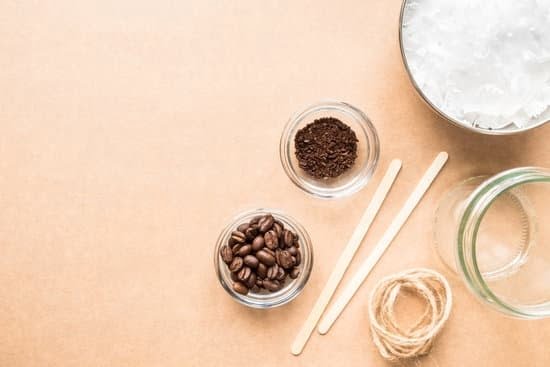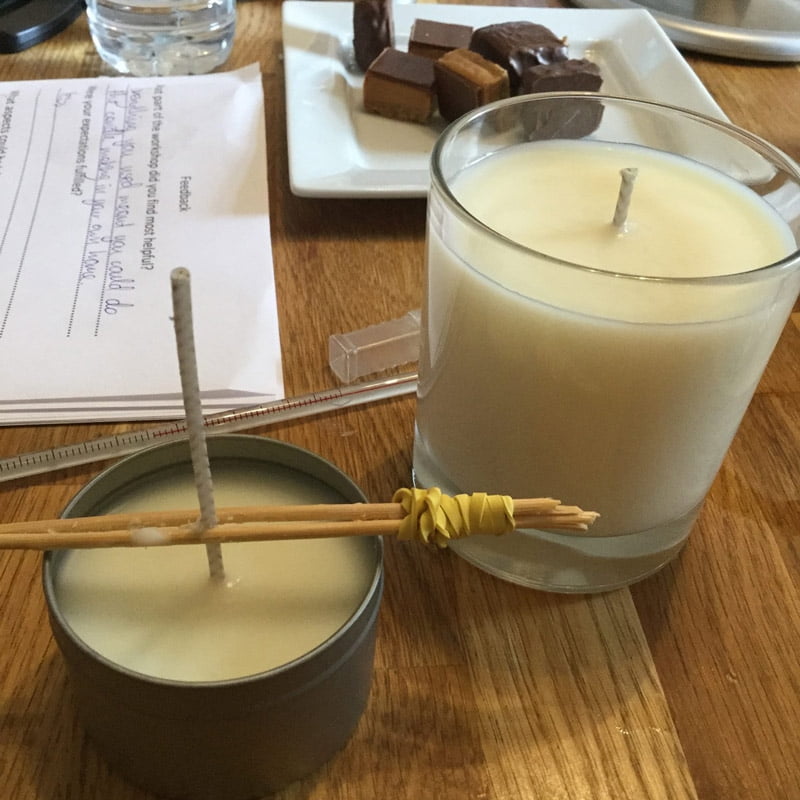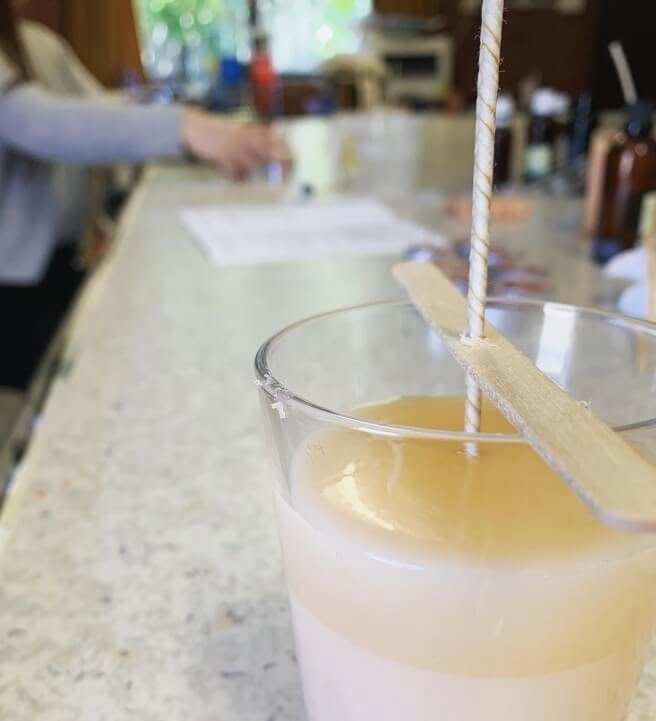When it comes to making candles, one of the most crucial elements to consider is the amount of scent to add. The right balance can make all the difference in creating a beautiful and fragrant candle, while adding too much or too little can result in a disappointing outcome. In this article, we will delve into the importance of getting the scent level just right and explore the science and techniques behind it.
Adding fragrance oils to candles is not only about creating an appealing aroma but also about understanding the science behind how scents interact with wax and heat. The type of wax used, the size of the candle, and even environmental factors can all play a role in determining how much scent is needed for optimal results. It’s essential to have a good grasp of these factors before beginning the candle making process.
In addition to understanding the technical aspects, measuring and adding the scent accurately is crucial for achieving consistent and desirable outcomes. We will explore tips for measuring fragrance oils and discuss different scent strengths to help you adjust accordingly. By mastering these techniques, you can ensure that your candles are perfectly scented every time. So, how much scent should you add when making candles? Let’s dive into this topic further in the following sections.
The Science of Candle Making
The fragrance of a candle is often what sets it apart and makes it enjoyable to burn. The science behind this lies in the use of fragrance oils, which are essential in creating aromatic candles. These oils are specially formulated to disperse scent when heated, and they play a crucial role in determining the strength and longevity of the fragrance in the final product.
When making candles, fragrance oils are carefully selected to ensure that they blend well with the chosen wax and complement the intended purpose of the candle. For example, some scents may be better suited for relaxation and aromatherapy, while others may be more appropriate for freshening up a room or adding a touch of warmth and ambience.
Understanding how much scent to add when making candles is vital in ensuring that the end result meets your expectations. Too much scent can lead to overwhelming fragrances that may even cause headaches, while too little scent can result in a lackluster experience. It’s important to strike the right balance by following guidelines and considering factors such as wax type and candle size before adding any fragrance oil.
| Fragrance Oil | Recommended Amount Per Pound of Wax |
|---|---|
| Lavender | 1 ounce |
| Vanilla | 5 ounces |
| Peppermint | 3 ounces |
By understanding these principles and taking accurate measurements during the candle making process, you can ensure that your candles not only look beautiful but also smell delightful when lit. Experimenting with different fragrance oils and learning how they interact with wax will ultimately lead to successful candle making that delights both you and those who enjoy your creations.
Factors to Consider
When it comes to making candles, one of the most crucial factors to consider is the type of wax and the size of the candle before adding scent. Different waxes have different properties that can affect how they hold and disperse fragrance oils, so it’s important to choose the right wax for your desired scent throw. In addition, the size of the candle will also impact how much scent you should add for optimal fragrance.
Choosing the Right Wax
The type of wax used in candle making plays a significant role in how much scent should be added. Different waxes such as soy, paraffin, beeswax, and coconut wax each have their own unique characteristics when it comes to holding and releasing fragrance oils.
For example, soy wax has a great scent throw and can hold a high percentage of fragrance oil, while beeswax has its own natural honey-like aroma that may interfere with added scents. It’s important to research and understand the properties of each type of wax before adding any fragrance oils.
Considering Candle Size
The size of the candle also determines
It’s essential to calculate the right amount of fragrance oil based on the volume or weight of the wax used for each specific candle size. Failing to consider this factor may result in under-scenting or over-scenting, affecting the overall quality and performance of your finished candles.
Measuring the Scent
When it comes to making candles, adding the right amount of scent is crucial for creating a fragrant and long-lasting product. Whether you are making candles for personal use or as a business venture, understanding how much scent to add when making candles is essential for achieving the desired result. In this section, we will explore some tips for accurately measuring and adding fragrance oils to the wax.
Weighing vs. Measuring by Volume
One of the most important considerations when adding scent to your candles is whether to measure by weight or volume. While some candle makers prefer to measure fragrance oils by weight using a scale, others opt for measuring by volume using graduated cylinders or beakers. It is essential to follow the recommended guidelines provided by the fragrance oil manufacturer and adjust your measurement method accordingly.
Considering the Wax Type and Candle Size
The type of wax used and the size of the candle are also crucial factors to consider when measuring the scent for your candles. Different waxes have varying absorption rates, meaning that they can hold different amounts of fragrance oils. Additionally, larger candles may require a higher concentration of scent compared to smaller ones in order to achieve the desired level of fragrance throw. It’s important to take these factors into account and adjust your measurements accordingly.
Using Fragrance Calculators
To ensure accuracy when adding scent to your candles, consider using fragrance calculators that are readily available online. These tools can help you determine exactly how much fragrance oil to add based on the type and amount of wax you are using, as well as the desired strength of the scent. By inputting these details into a fragrance calculator, you can ensure that you are adding just the right amount of scent for optimal results.
Different Scent Strengths
When it comes to making candles, understanding the varying strengths of fragrance oils is crucial in order to achieve the desired scent. Different fragrance oils have different concentrations, and knowing how to adjust accordingly can make all the difference in the final product. It’s important to consider the type of wax being used, as well as the size of the candle, as these factors will determine how much scent should be added.
There are generally three categories of fragrance oil concentrations: light, medium, and strong. Light fragrance oils are ideal for smaller spaces or for those who prefer a more subtle scent. Medium-strength oils are versatile and work well for most candle sizes and room sizes. Strong fragrance oils should be used sparingly, especially in larger candles or for open spaces.
To adjust accordingly based on the strength of the fragrance oil, it’s important to start with a small amount and gradually increase until the desired scent is achieved. This process may require some experimentation, but keeping detailed notes on the amount of oil used and the resulting scent strength can be helpful for future candle making endeavors.
Taking into account these varying strengths of fragrance oils is essential for successful candle making. Carefully measuring and adjusting according to the type of oil and candle size will help ensure that your candles have just the right amount of scent.
| Fragrance Oil Strength | Recommended Use |
|---|---|
| Light | Ideal for smaller spaces or subtle scents |
| Medium | Versatile; suitable for most candle sizes and room sizes |
| Strong | Use sparingly, especially in larger candles or open spaces |
Over-Scenting vs Under-Scenting
When it comes to making candles, adding the right amount of scent is crucial for ensuring a high-quality end product. Whether you’re using fragrance oils or essential oils, the balance between wax and scent is essential to achieve the perfect aromatic experience. Understanding the consequences of over-scenting vs under-scenting can help you avoid common pitfalls and create candles that are both fragrant and long-lasting.
Factors such as the type of wax and the size of the candle play a significant role in determining how much scent to add when making candles. Different waxes have varying absorption rates, meaning some may require more or less scent to achieve the desired fragrance level. Additionally, larger candles will require more scent than smaller ones in order to distribute the aroma evenly throughout the space.
Accurately measuring and adding fragrance oils to the wax is key to achieving a well-balanced scented candle. Using a precise scale to measure out the correct amount of scent can help prevent over-scenting or under-scenting. Additionally, incorporating a stir stick can help evenly distribute the fragrance oil throughout the melted wax for consistent scent throw. Below are some tips for accurately measuring and adding scent when making candles:
- Use a digital scale to measure fragrance oils
- Follow recommended guidelines for scent load based on wax type
- Stir thoroughly after adding fragrance oil
- Adjust accordingly based on candle size
Understanding these considerations will ensure that your candles have just the right amount of scent, providing an enjoyable olfactory experience without overpowering or underwhelming those who use them.
Experimenting With Scents
Experimenting with different scents is a fun and creative part of candle making. By blending and testing different fragrances, you can create unique and personalized candles that cater to your preferences or the preferences of your customers if you’re making candles for sale. Here are some tips for experimenting with scents when making candles:
- Start with small batches: When blending fragrances, it’s always a good idea to start with small batches to see how the scents work together. This way, you can adjust the ratios of each fragrance if needed without wasting a large amount of wax.
- Keep track of your experiments: It’s important to keep track of the combinations you try and the measurements of each scent used. This way, if you come across a blend that works really well, you’ll be able to recreate it in the future.
- Consider the season or occasion: When experimenting with scents, consider the season or occasion for which the candle will be used. For example, floral or citrus scents may be more popular during spring and summer, while warm and spicy scents are great for fall and winter.
By following these tips, you can create unique and pleasing scents for your candles that stand out from commercially available options. Remember that experimenting with different fragrances is an integral part of candle making and can lead to exciting new creations.
It can be challenging to determine how much scent to add when making candles, especially when blending multiple fragrances. However, through experimentation and careful measuring, you can find the right balance of scents that suits your preferences or meets the demands of your target market.
Conclusion
In conclusion, the art of candle making goes beyond just melting wax and adding a wick. The right amount of scent is crucial in creating high-quality and fragrant candles. Understanding the science behind candle making, from the role of fragrance oils to the varying strengths of scents, is essential for achieving the perfect balance in your creations.
When it comes to determining how much scent to add when making candles, factors such as the type of wax and candle size play a significant role. Accurately measuring and adding fragrance oils to the wax is key to achieving consistency and desired scent intensity. It is important to consider the varying strengths of fragrance oils and make adjustments accordingly to avoid over-scenting or under-scenting your candles.
Lastly, successful candle making often involves experimenting with different scents and blending techniques to create unique and pleasant aromas. Testing and blending various fragrances can lead to discovering new combinations that will set your candles apart. By following these tips and considerations, you can ensure that your candle making process results in beautifully scented products that are sure to delight customers and enhance their environment.
Frequently Asked Questions
What Is the Best Amount of Fragrance for Candles?
The best amount of fragrance for candles depends on the type and size of the candle, as well as personal preference. Generally, it is recommended to use about 6-10% fragrance oil per pound of wax. However, some waxes may require a higher or lower percentage for optimal scent throw.
Can You Add Too Much Scent to a Candle?
Yes, it is possible to add too much scent to a candle. Over-saturating the wax with fragrance oil can lead to poor burning, smoking, and even a lack of hot throw (scent when the candle is burning). It’s important to follow guidelines and not exceed the recommended fragrance load for the specific wax you are using.
What Is the Ratio of Soy Wax to Fragrance?
The ratio of soy wax to fragrance can vary depending on the type of fragrance oil being used and individual preferences. A common starting point is around 6-10% fragrance oil per pound of soy wax.
However, it’s essential to refer to the specific manufacturer’s recommendations for both the soy wax and fragrance oil being used, as they may have suggested ratios for optimal results.

Welcome to my candle making blog! In this blog, I will be sharing my tips and tricks for making candles. I will also be sharing some of my favorite recipes.





